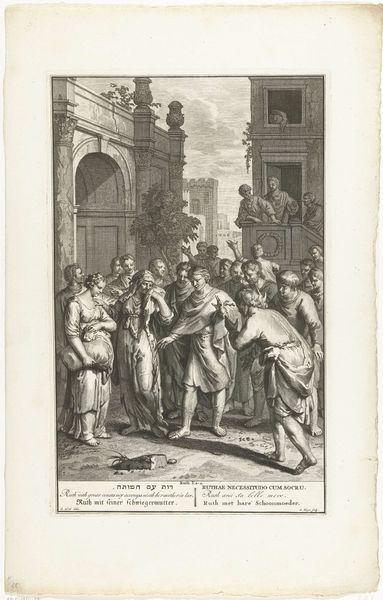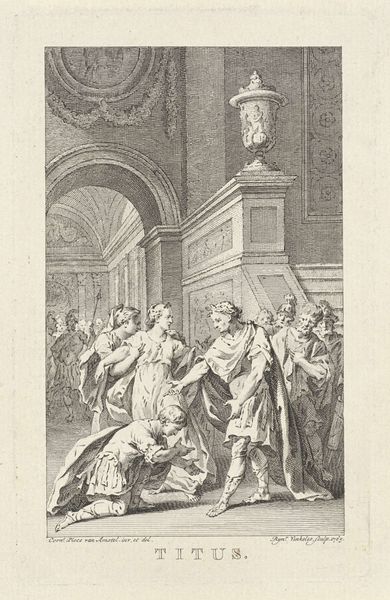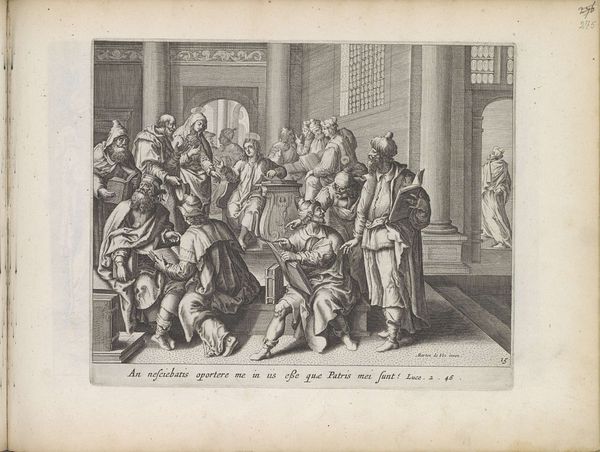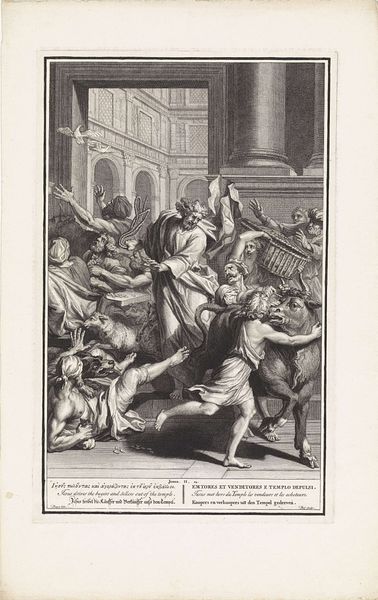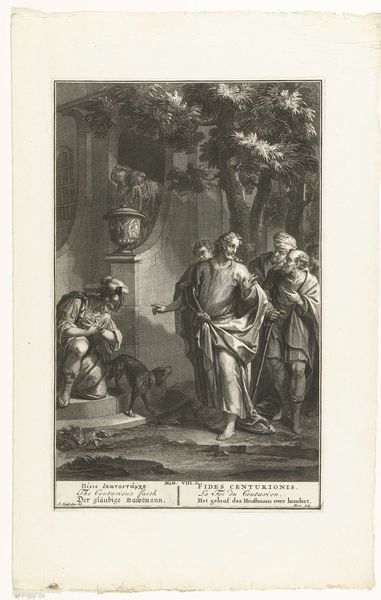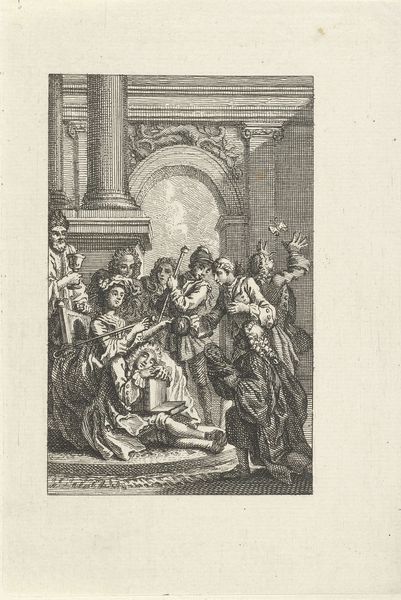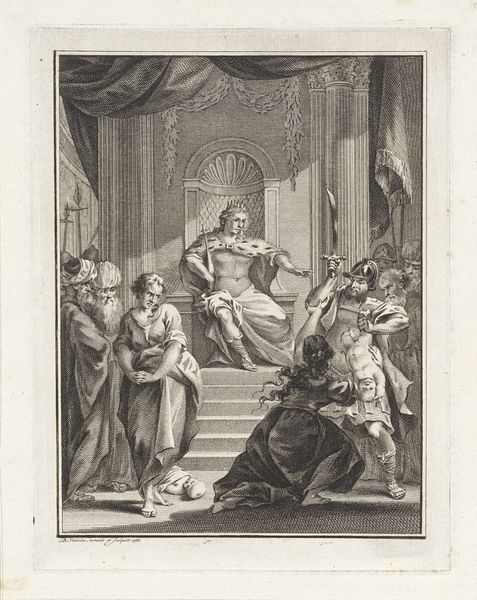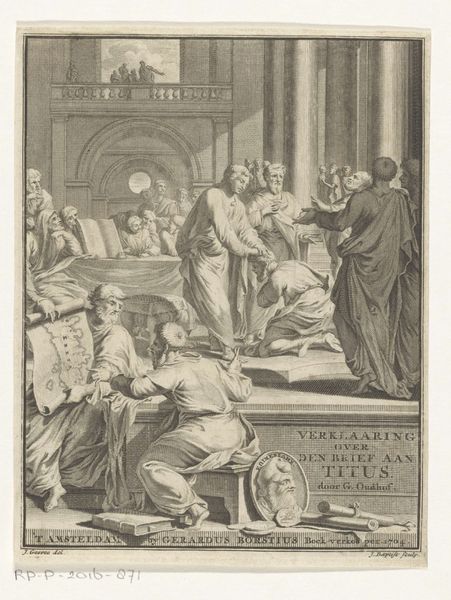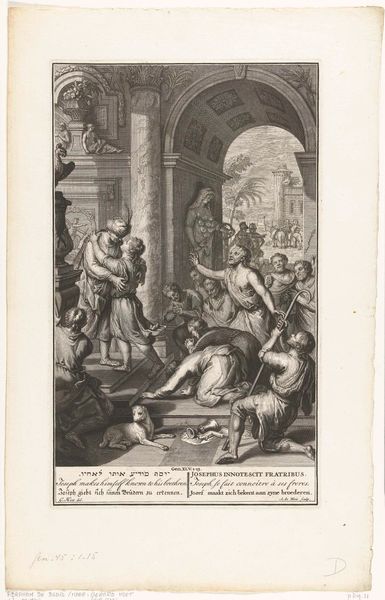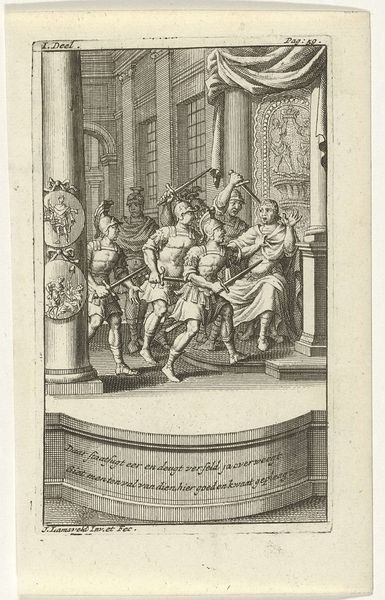
engraving
#
baroque
#
figuration
#
history-painting
#
engraving
Dimensions: height 364 mm, width 231 mm
Copyright: Rijks Museum: Open Domain
Curator: Let’s look at Jacob Folkema’s "The Crowning with Thorns", an engraving from the early 18th century, currently held at the Rijksmuseum. Editor: The scene feels so claustrophobic, with all these figures crowding around Christ. I’m curious, what stands out to you the most in this piece? Curator: It's fascinating to consider the cultural context within which Folkema was operating. The Baroque style, with its inherent drama and emotional intensity, served as a powerful tool to convey specific messages, right? Engravings, as a medium, were also particularly well-suited for widespread dissemination of such messages, influencing a larger audience and impacting consumption habits. So, how do you think the mass reproducibility via engraving affects our understanding of this scene versus a one-of-a-kind painting? Editor: That’s interesting… because the act of engraving seems to strip the emotion and depth present in painting into very simplified lines. This makes it feel staged, like we’re only seeing a portion of its impact. Curator: Exactly. Consider how labor impacts meaning; engravings such as this one weren’t just individual artistic expressions. It's commercial labor designed to promote ideologies and generate income. Does this shift your interpretation? Editor: I think it makes me question the role of the artist more. Was Folkema merely a craftsman, or was he making deliberate choices to reflect on religious power structures through his art? Curator: Good. His craft makes you think of this history with newer eyes. It forces us to reconsider how the labor and material realities intersect. Editor: Right. Seeing it as a crafted object changes everything, doesn't it? I never considered the impact of engravings as products.
Comments
No comments
Be the first to comment and join the conversation on the ultimate creative platform.
